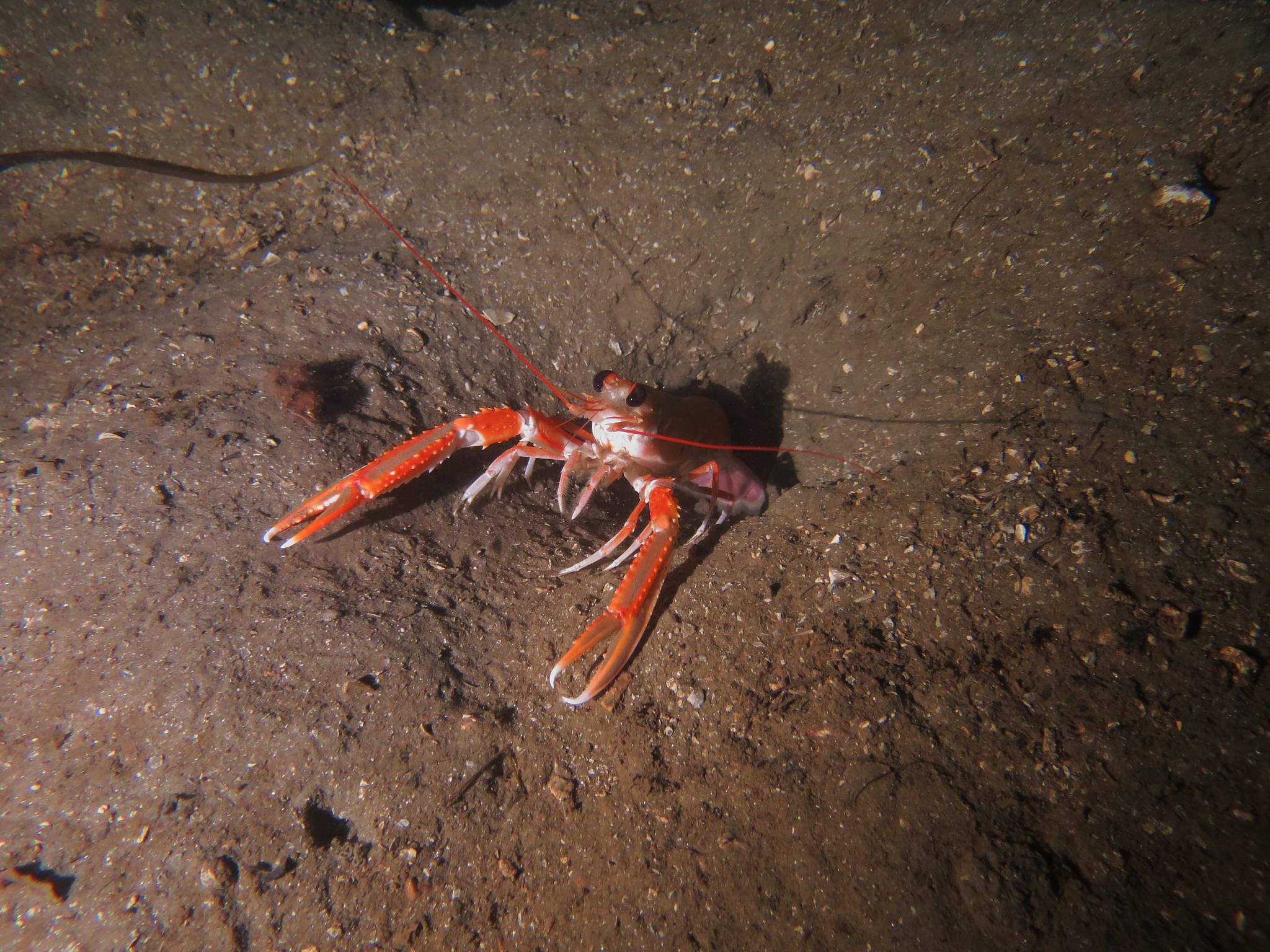
The amount of noise humans broadcast underwater has doubled every decade for the past 60 years. It's a problem that reached something of a fever pitch in recent years with the news that underwater detonations can injure and even kill whales. But a new study is sounding a different alarm by suggesting that the everyday noise of human activity could have subtle yet far-reaching effects on animal behavior.
"Exposure to sound fields can result in species responses that fundamentally alter how species interact with their environment," says Martin Solan, a professor of marine ecology at the University of Southampton in England. He's the lead author of a paper published February 5 in the journal Scientific Reports that looks at the way the Manila clam, langoustine lobster and brittle star respond to noise.
Those three invertebrates may not have the star power of big-eyed, multiton cetaceans, but the bottom dwellers play an important role in the ecosystem by burrowing in the ocean floor and mixing sediment with water. This stirs up nutrients and buries carbon, which helps keeps life on the sea floor thriving.
In lab aquariums, Solan and five other scientists bombarded the creatures with continuous noise like that produced by shipping traffic and then with occasional noise that mimicked the sound of construction. They found that, on the whole, the animals became more stressed—they moved less and the Manila clam clammed up, both typical responses to threats.
"We show that these previously unrepresented species are also affected by exposure to sound fields, which is important because these tend to be species that are important in influencing many important ecosystem processes, such as nutrient cycling," says Solan.
Just as notable, the study found variations. The brittle stars showed little change in behavior, while the clams and langoustines sometimes responded in different ways to the different types of noise. The researchers says that variation underscores the need to study the reactions of a broad range of animals to noise in order to make informed decisions about when and how to protect them.
"The ability to regulate, legislate and minimize the impact of sound relies on knowledge of who, what, how, when and where likely impacts of sound exposure will be encountered," says Solan. In 2013, environmental groups, oil industry representatives and the Department of the Interior agreed to cooperate to protect whales and dolphins during oil exploration in the Gulf of Mexico. And a court settlement in 2015 forced the U.S. Navy to stop testing sonar in sensitive sea mammal habitat in California and Hawaii. But unless we widen the scope of our research on the effects of underwater noise to include less sexy species, Solan says, we won't be able to develop sound strategies to protect underwater life as a whole.
Uncommon Knowledge
Newsweek is committed to challenging conventional wisdom and finding connections in the search for common ground.
Newsweek is committed to challenging conventional wisdom and finding connections in the search for common ground.
About the writer
To read how Newsweek uses AI as a newsroom tool, Click here.





